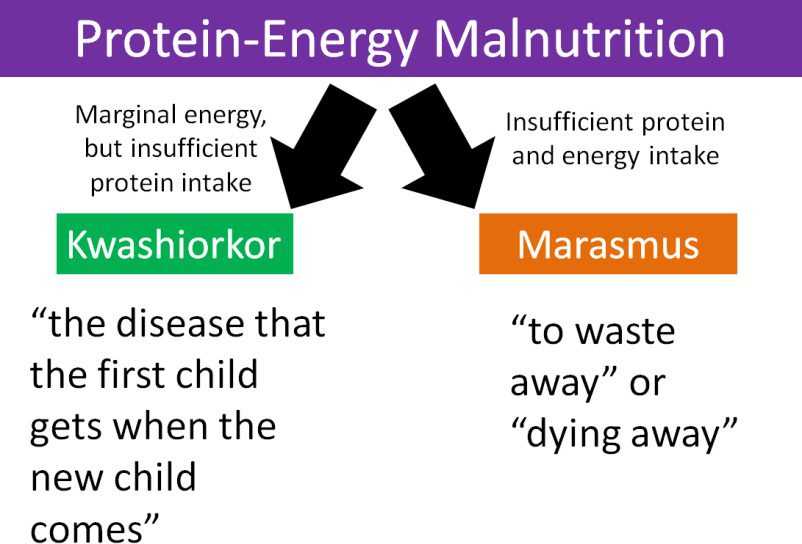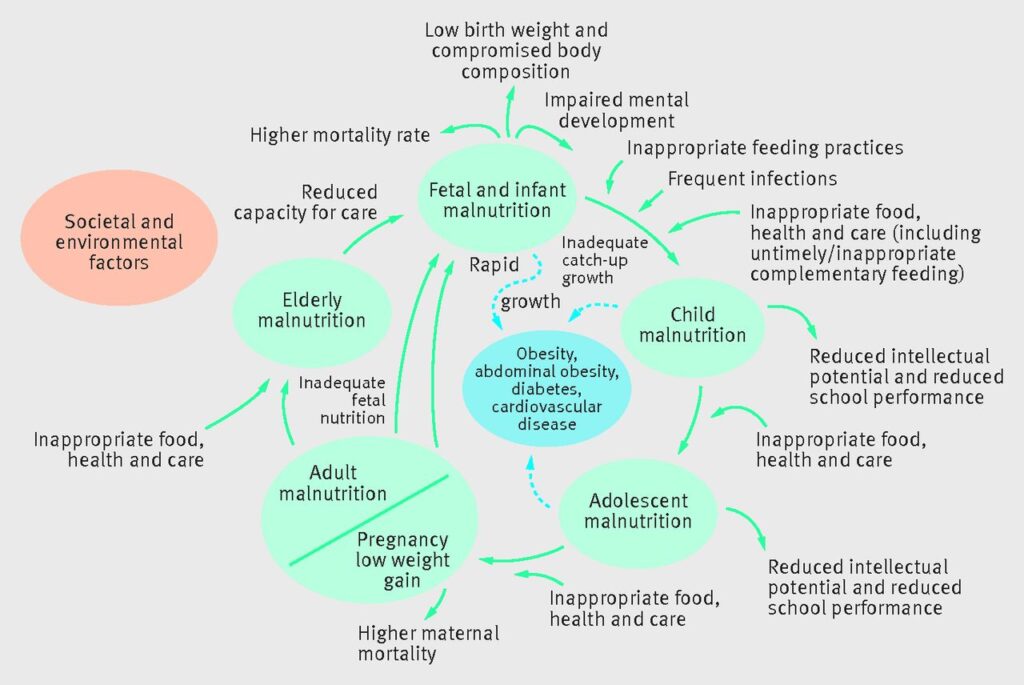Malnutrition is a global health concern that affects millions of people across the world. Often abbreviated as MN, it refers to deficiencies, excesses, or imbalances in an individual’s intake of energy and nutrients. While malnutrition is commonly associated with undernutrition, it also encompasses overnutrition and specific nutrient deficiencies. This article delves into the various types of malnutrition, its causes, effects on individuals and communities, and effective strategies for prevention.

Understanding Malnutrition
Malnutrition is not just about insufficient food intake. It is a complex condition that can manifest in different forms, each with unique characteristics and consequences. To address this issue effectively, it is crucial to understand the various types of malnutrition.
Undernutrition
Undernutrition occurs when an individual does not consume enough calories, protein, or essential micronutrients to meet their body’s needs. It often leads to stunted growth, wasting, and weakened immunity. Undernutrition is particularly prevalent in low-income countries and regions affected by poverty, conflict, or natural disasters.
Stunting
- Stunting refers to impaired growth and development in children caused by chronic undernutrition during critical periods of growth.
- It results in short stature for age and can have long-term effects on cognitive development and productivity.
Wasting
- Wasting is characterized by low weight for height and indicates acute undernutrition.
- It often occurs due to sudden food shortages, illness, or inadequate care practices.
Underweight
- Being underweight refers to having a low body weight for age, which can result from either stunting, wasting, or both.
- This condition increases the risk of infections and mortality, especially in young children.
Overnutrition
Overnutrition occurs when an individual consumes more calories than their body requires, leading to excessive weight gain and obesity. This form of malnutrition is increasingly common in high-income countries but is also rising in low- and middle-income nations due to changing dietary habits and lifestyles.
Obesity
- Obesity is a condition where excessive fat accumulation poses a risk to health.
- It is linked to numerous chronic diseases, including heart disease, diabetes, and certain cancers.
Hidden Hunger
- Hidden hunger refers to deficiencies in essential vitamins and minerals, such as iron, iodine, and vitamin A.
- It often coexists with overnutrition and can lead to serious health problems despite adequate calorie intake.
Causes of Malnutrition
Malnutrition arises from a combination of factors that vary depending on geographic, economic, and social contexts. Understanding these causes is essential for developing targeted interventions.
Poverty
Poverty is one of the primary drivers of malnutrition. Limited financial resources restrict access to nutritious foods, clean water, and healthcare services. Families living in poverty often prioritize cheaper, calorie-dense foods over nutrient-rich options, leading to both undernutrition and overnutrition.
Inadequate Access to Food
In many parts of the world, food insecurity is a significant cause of malnutrition. Factors such as political instability, climate change, and poor agricultural practices can disrupt food production and distribution systems, leaving communities without sufficient food supplies.
Poor Dietary Practices
Cultural beliefs, lack of nutrition education, and marketing of unhealthy foods contribute to poor dietary practices. For instance, reliance on processed foods high in sugar, salt, and unhealthy fats can lead to overnutrition, while neglecting diverse diets can result in micronutrient deficiencies.
Disease and Illness
Infectious diseases, such as diarrhea, malaria, and respiratory infections, exacerbate malnutrition by increasing nutrient requirements and impairing nutrient absorption. Chronic illnesses like HIV/AIDS and tuberculosis further weaken the body’s ability to utilize nutrients effectively.
Lack of Healthcare Services
Inadequate access to healthcare services limits early detection and treatment of malnutrition. Pregnant women, infants, and young children are particularly vulnerable, as they require specialized care and nutritional support during critical stages of development.
Effects of Malnutrition
The consequences of malnutrition are far-reaching, affecting individuals, families, and entire societies. These effects span physical, cognitive, and socio-economic domains, perpetuating cycles of poverty and inequality.
Physical Health Impacts
Malnutrition weakens the immune system, making individuals more susceptible to infections and diseases. In children, it can lead to delayed growth, developmental delays, and increased mortality rates. Adults suffering from malnutrition may experience fatigue, reduced work capacity, and chronic health conditions.
Child Development
- Undernutrition during pregnancy and early childhood can cause irreversible damage to brain development.
- Children who suffer from malnutrition are more likely to perform poorly in school and have lower earning potential as adults.
Maternal Health
- Malnourished mothers are at higher risk of complications during pregnancy and childbirth.
- They are also more likely to give birth to underweight babies, perpetuating intergenerational cycles of malnutrition.
Economic Consequences
Malnutrition imposes a significant economic burden on households and nations. Healthcare costs rise due to increased morbidity and mortality, while productivity losses occur as a result of impaired physical and cognitive abilities. Countries with high rates of malnutrition often struggle to achieve sustainable economic growth.
Social Implications
Malnutrition exacerbates social inequalities and contributes to gender disparities. Women and girls are disproportionately affected due to cultural norms that prioritize male family members’ nutritional needs. Additionally, marginalized communities face greater barriers to accessing nutritious foods and healthcare services.
Prevention of Malnutrition
Addressing malnutrition requires a multifaceted approach that combines policy interventions, community engagement, and individual actions. By tackling the root causes and promoting healthy behaviors, it is possible to prevent malnutrition and improve overall well-being.
Improving Food Security
Ensuring access to affordable, nutritious foods is fundamental to preventing malnutrition. Governments and organizations can invest in sustainable agriculture, strengthen supply chains, and implement social safety nets to support vulnerable populations.
Agricultural Innovations
- Promoting crop diversification and biofortification can enhance the nutritional value of staple foods.
- Supporting small-scale farmers through training and resources helps increase food production and availability.
Social Protection Programs
- Cash transfer programs and food subsidies enable low-income families to purchase nutritious foods.
- School feeding initiatives provide children with regular meals, improving attendance and academic performance.
Promoting Nutrition Education
Raising awareness about the importance of balanced diets and healthy eating habits is critical for preventing malnutrition. Educational campaigns can target schools, workplaces, and communities to encourage informed food choices.
Behavioral Change Communication
- Using media platforms and community outreach programs to disseminate nutrition information.
- Engaging local leaders and influencers to promote positive dietary practices.
Parental Guidance
- Providing parents with guidance on breastfeeding, complementary feeding, and meal planning.
- Encouraging exclusive breastfeeding for the first six months of life to ensure optimal infant nutrition.
Strengthening Healthcare Systems
Robust healthcare systems play a vital role in preventing and managing malnutrition. Regular screenings, timely interventions, and access to therapeutic foods can save lives and reduce the long-term impacts of malnutrition.
Antenatal and Postnatal Care
- Offering pregnant women nutritional supplements and monitoring their health throughout pregnancy.
- Providing postnatal care and support to new mothers to ensure proper infant feeding practices.
Treatment of Acute Malnutrition
- Implementing community-based management programs for treating severe acute malnutrition.
- Training healthcare workers to identify and address malnutrition cases promptly.
Addressing Social Determinants
Tackling the underlying social determinants of malnutrition, such as poverty, gender inequality, and lack of education, is essential for achieving lasting change. Policies that promote equitable access to resources and opportunities can help break the cycle of malnutrition.
Empowering Women
- Improving women’s access to education, employment, and decision-making power within households.
- Ensuring women have control over household finances to prioritize nutrition-related expenses.
Reducing Inequalities
- Implementing inclusive policies that address the needs of marginalized groups, including ethnic minorities and displaced populations.
- Promoting social cohesion and reducing discrimination to create supportive environments for all individuals.





